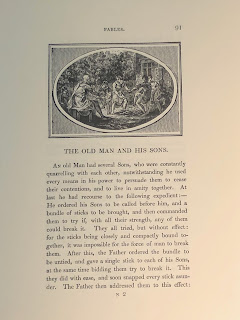I was reminded this morning, by one of my friends who is a blog follower, that Marty and I were close to the location where the PBS Series, Vera, is filmed. If you haven’t seen the show, it is a series based on a woman who has an uncanny sense that leads to her solving bazaar murder cases.
The show is filmed near Newcastle, and my friend had sent me a link for a half day bus tour of Vera filming sites. The information described the tour, which included visiting gruesome murder sites that had been featured in various episodes. And, if that wasn’t enough to tickle your fancy, you could order an official Vera hat to help celebrate the event.
I have to admit that I actually laughed out loud reading this. I’m the last person who would find excitement in revisiting “gruesome” murder locations, especially since I am known to shut my eyes during this parts of the episode.
But I was reminded by my husband, that I do own a Vera like rain coat, and am generally donning a scarf wrapped around my neck. I’m just missing the hat.
And, as tempted as it might sound to join the tour, I was perfectly happy to enjoy the same scenery that I might have spotted in the many episodes that Marty and I have enjoyed, while bypassing the actual “murder” part.
But it’s a moot point, as we left the area this morning with the Lake District being our final destination. But not before exploring Cherryburn which was located quite near our B&B.
Another National Trust Site, it holds the house where Thomas Bewick was born, and another house where he would have lived with his own family. I was not familiar with the name, but within minutes, it was easy to see why he is considered to be a famous English artist.
He was known for carving boxwood to serve as “plates” in a printing press to add pictures to print. His work was featured in Audobon Society books, as well as many manuals, and even a copy of Aesop’s Fables. The detail was amazing.The boxwood was cut to be as thick as the metal letters used in the printing press, so that when they were inked up next to each other, and pressed, the result was a uniform photo and paragraph. Really quite clever, if you ask me.
To add to our excitement, upon entry to the site we soon learned that the Best British Dig was going to be filming that day, and we were asked to sign waivers in case our faces showed up in any of the footage. I found that to be quite amusing, because I’m fairly certain that no one in Great Britain would have recognized us anyway. But it was definitely quite fun and we were made to feel rather important as part of the process.
While we were there, a 1797 coin was discovered in the dig. It really was quite an interesting event and we could tell that the producers and the archaeologist were extremely excited about the find.
We certainly do manage to stumble upon some unusual happenings, don’t we?
And what a glorious day to enjoy such excitement!
From here we began to make our way southwest, to a second National Trust Site, Acorn Bank. The drive was definitely challenging with us climbing to Hartside Summit, and back down the other side. The roads are relatively narrow, but it was the hairpin curves on the way up, and again, on the way down, that caused a bit of nail biting on my part.
But, we finally arrived at our destination.
The place is called Acorn Bank because at one time it held a forest of Acorn Trees. But, the owner had most of them cut down to see the view. The house had been used as a nursing home at one point, so the upstairs still needs to be converted back to its original decor. But the main hall at the downstairs entrance has been restored to the 17th century time period, even though the house dates back long before that.
There is a wing to the right of the main entrance that is sparsely decorated with items belonging to the last owner.
We saw pear trees loaded with fruit
as well as several plum trees.
The gardens hold 27 different varieties of apples, most looking quite healthy.
There were artichokes
and varied flowers of many kinds.
Such magnificence only enhanced by the clever use of shrubbery.
Interestingly enough, there is an operating mill on the estate that grinds wheat on the weekends, which the Trust then sells in 5 pound bags to those who might be interested. They also sell their abundance of fruit, at a very reasonable price to raise funds for restoration on the estate.
After we finished walking the grounds, we opted to head to Aira Force, which is a waterfall highly recommended for viewing.
The GPS couldn’t seem to find it, but with some persistence, we did, and we headed up the trail in search of the falls. Luckily, I had brought my walking sticks, which I certainly did need as there were some steep inclines and a LOT of large rocks to maneuver through.
We finally were able to spot it in the distance. It was pretty awesome to see the water jutting out with such force.
































No comments:
Post a Comment